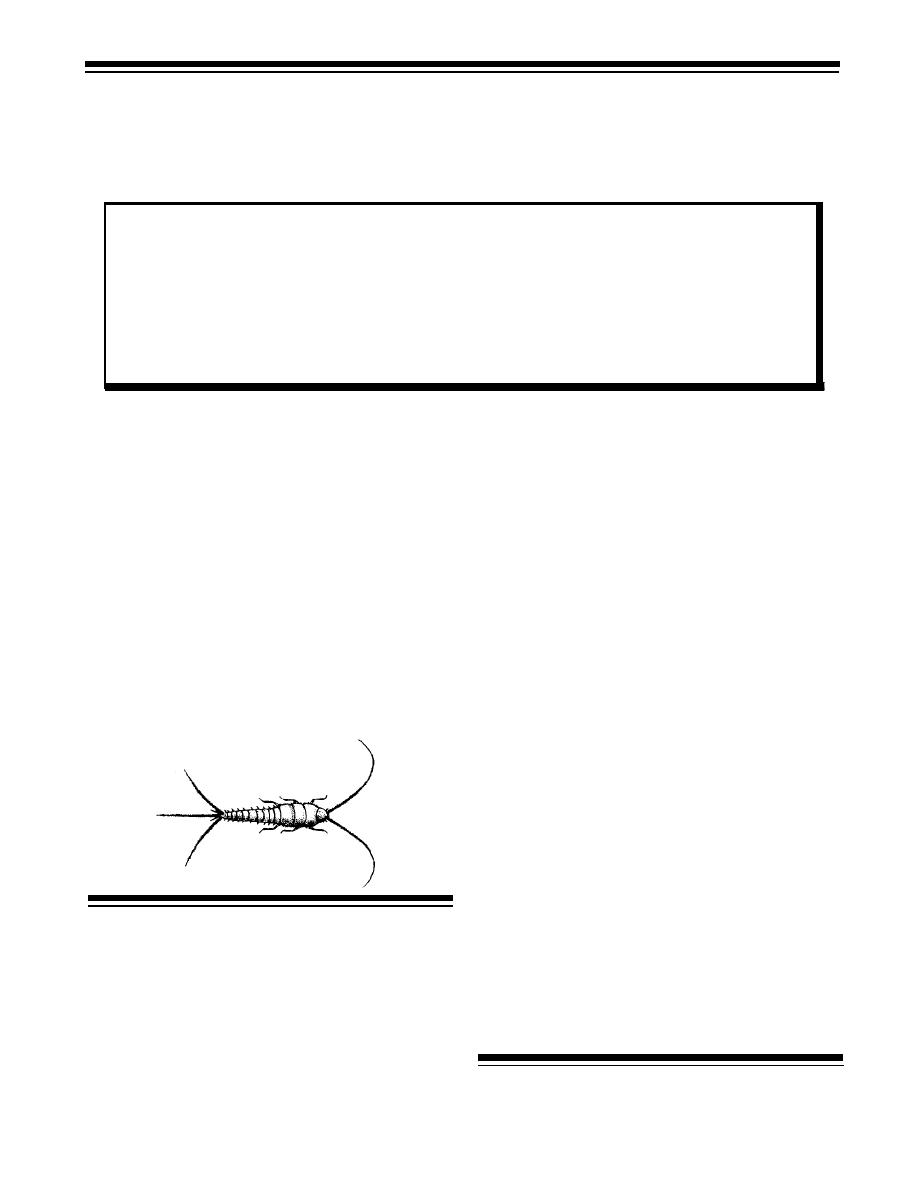

Custom Search
|
|

|
||
 CHAPTER 6
SILVERFISH & FIREBRATS
Learning Objectives
After completion of the study of Silverfish & Firebrats, the trainee should be able to:
Identify key features in the life cycle, habitat and appearance of silverfish
and firebrats.
Understand silverfish and firebrat pest management.
textiles and papers, but they can also digest cellulose
Silverfish and firebrats are among the most
fibers.
ancient of insects; they were on earth before insects
Silverfish build up around the materials they are
developed wings. These pests were among the most
feeding on such as spilled flour in cupboards,
common insects in homes and businesses when
corrugated cardboard boxes in damp basements,
wallpaper was the usual wall covering and when coal
insulation glue and stored books in unventilated attics.
furnaces had glued, taped, insulated pipes.
Their feeding leaves irregular yellow-stained holes in
Pest bristletails are about l/2 inch when adult
sized textiles and paper, surfaces removed from
and, unlike other insects, they continue to molt and
corrugated cardboard, and irregular areas grazed off
may shed their exoskeletons as many as 50 or 60 times
cloth-bound books. Damaged products will often have
when full grown. They have long antennae in front
a dark fungus growing on them as a result of the
and three antenna like processes behind the "bristles"
humidity and insect fecal deposits.
of the bristle tails. They are slender, broadest in front
Large populations of silverfish spread out into
and gradually taper toward the rear. In general, they
other humid areas. Silverfish are often trapped in wash
shun light and prefer dark, undisturbed sites. Two
basins and bath tubs in bathrooms to which they
species, the silverfish, and the firebrat, are the most
migrate from the basement or out of wall voids
penetrated by pipes.
common representatives of the bristletails.
Gray Silverfish
The gray silverfish is uniformly gray, sometimes
very dark. It is most common in southern California
and Hawaii. This species is more a pest of paper and
textiles.
Fourlined Silverfish
The fourlined silverfish has four dark lines down
its abdomen and is very slightly longer than the
common silverfish. It builds up in the mulch of flower
THE SILVERFISH
beds and under roof shingles, then enters attics and
Lepisma saccharina
upstairs rooms. They can be common both outdoors
The silverfish is about l/2 inch long when full
and indoors on the east and west coast. High humidity
grown and is covered by a sheen of silvery scales. It
from overhanging trees in summer promotes build-up
prefers temperatures between 70 and 80 F, and
of this species.
requires high humidity. Adults can live from two to
three years. They feed on starchy substances like
flour, starch, glue, paste and the starch sizing on
Module One, Chapter 6, Pg 1
|
 |
|
 |
||